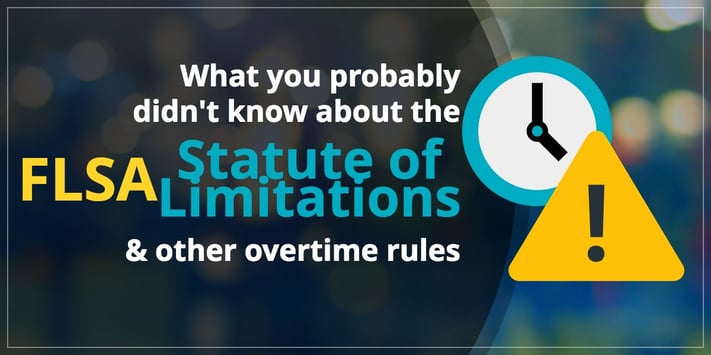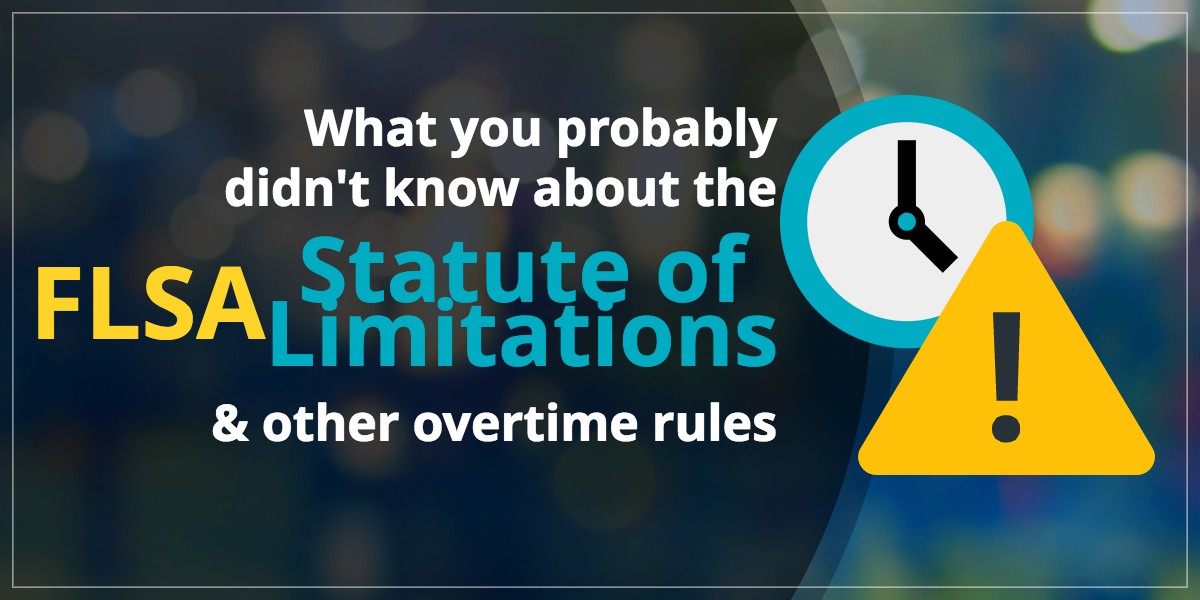Update: As of July 1, 2024 changes have been implemented to the Fair Labor Standards Act. For most up to date information, visit the Department of Labor website or schedule a consultation with Fuse.

The Fair Labor Standards Act (FLSA) has regulated employee overtime eligibility for decades. However, recent changes require a second look at how your organization classifies employees and calculates overtime pay.
Over the years, there have been some notable changes to the FLSA. For example, in 2016, the Department of Labor raised the minimum income threshold for an employee to be considered FLSA exempt from $23,600 annually ($455 per week) to $47,476 annually ($913 per week). As a result, employees earning below the new threshold became eligible for time-and-a-half pay for overtime work.
Since then, there have been additional changes that impact overtime eligibility and the FLSA classification of employees. To stay in compliance and avoid possible penalties—or even lawsuits—you’ll need to understand these new overtime rules and the applicable FLSA statute of limitations.
What is the FLSA statute of limitations?
In the event of a dispute about an employee’s overtime eligibility, you should understand both the possible legal avenues an employee can pursue and the applicable statute of limitations.
The FLSA statute of limitations is the maximum amount of time an employee can wait before filing a lawsuit for unpaid overtime wages. Under federal law, which sets the statute of limitations for most states, FLSA claims must be made within two years. However, the deadline can be extended to three years in the case of an employer’s proven willful violation.
Under the statute of limitations, if an employee is found to have been denied overtime pay, even accidentally, they could be eligible to receive back pay (unpaid overtime) for a full two years.
It’s important to note that the statute of limitations only applies to overtime lawsuits, and not wage and hour claims. Employees who believe they have been unfairly denied overtime can also file a wage claim with the Wage and Hour Division of the Department of Labor. Unlike a lawsuit, a wage claim does not involve the court system. Therefore, an employee could theoretically file a wage and hour claim, and if it is not resolved, proceed to file a lawsuit.
Wage claim rules can vary by state. For example, in some states, the statute of limitations for FLSA lawsuits can be extended further than two years. California allows up to three years, and New York allows up to six years. And in Delaware, employees must file wage claims at least 90 days before the FLSA statute of limitations ends.
What are the recent FLSA regulation changes?
It is essential to understand recent FLSA changes and be sure you implement them in your organization. Staying in full compliance with recent rule changes can put you in a better position to avoid claims or lawsuits within the statute of limitations time frame.
One critical and recent change is the new FLSA overtime rule that became effective on Jan. 1, 2020. The salary threshold was increased to $684 per week, or $35,568 per year, making an estimated one million more workers eligible for overtime pay.
The Department of Labor enforces the FLSA, and also recently made the following changes:
- Refined the definition of an employee’s regular rate of pay when determining the basis for overtime pay. Under the new definition, unused paid leave, sign-on bonuses, and certain benefits are not considered part of an employee’s regular rate of pay.
- Refined the definition of joint employer for the purpose of determining if more than one employer is liable to pay back wages or overtime to an employee. Of note is that this rule has been debated in the courts, and its validity is still being reconsidered.
How can you stay in compliance with recent FLSA rule changes?
As has always been the case, employers have an obligation to comply with FLSA changes set by the DOL to ensure that all eligible employees receive overtime pay for overtime hours worked. Doing so supports strong employee morale and avoids undue worries about the FLSA statute of limitations.
As new FLSA rule changes become effective, you should review your wage and hour practices for federal and state compliance, as the two can vary. Take the following steps to boost your compliance with all applicable FLSA requirements:
- Leverage integrated workforce management (WFM) technology: An integrated WFM solution supports your FLSA classification activities and allows you to keep employee working hours aligned with payroll. As a result, you can improve your recordkeeping and avoid overtime pay errors.
- Regularly evaluate employee FLSA classifications: Employee position and compensation changes may require an FLSA reclassification.
- Follow applicable regulatory changes affecting your workforce: Leverage tools such as the Fuse HR Compliance Tracker and stay informed about legislation changes occurring throughout the year.
Keep up with FLSA overtime rules.
Understanding FLSA classification and overtime rules are part of effective workforce management, but it can be challenging to keep up with frequent rule changes. Furthermore, it is one thing to understand FLSA requirements, and another to establish a roadmap for maintaining compliance alongside your other responsibilities. To help you stay focused on supporting your workforce and keep your organization in compliance with applicable FLSA requirements, download our handy resource, Guide to FLSA Status and Changes to Overtime Rules.
Originally published July 25, 2016 updated May 18, 2021.

